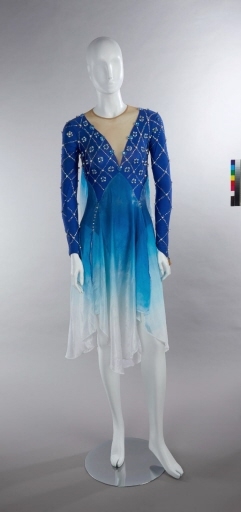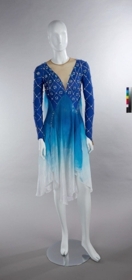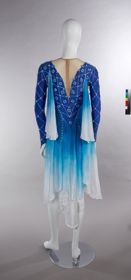The Renaissance-style costumes worn by Gwendal Peizerat and Marina Anissina, playing Romeo and Juliet at the Nagano 1998 Olympics matched with Prokofiev’s musical theme. The classical costumes were specifically designed by Natalia Bolshakova to create a contrast with the innovative choreography. The skaters started interpreting Shakespeare’s story from the end. The programme began with Juliet waving the dagger with which she kills herself and Romeo lying dead on the ice. The final lift evoked the famous balcony scene, but with Anissina unexpectedly lifting her partner.
Figure skaters who perform in the pairs or ice dance are more exposed to potential costume malfunctions because their clothing is more likely to catch and tear during lifts. Their costumes must be designed with these constraints in mind and are tested on ice several times. To strengthen the seams of the Swarovski crystals and avoid any incident or loss, Bolshakova waxed the thread before sewing, a technique she learned at the Bolshoi. Anissina wore tights over her skates, which made her legs look longer, and a long skirt with slit panels for freedom of movement. By choosing these elements, Bolshakova wanted to visually lengthen the athlete. The colour gradient and brilliant rhinestones stood out well on the ice. The designer chose the blue colour to match with Anissina’s flamboyant hair. She and his partner formed a contrasting pair but they were complimentary, "like fire and ice" as noted by their coach, Muriel Boucher-Zazoui.



